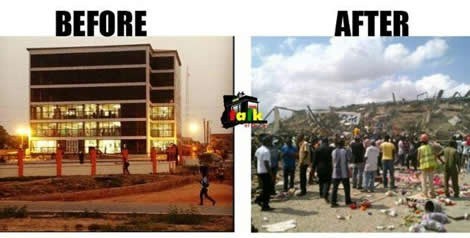Last week in Accra, Ghana, a multi-storey commercial complex collapsed injuring 62 people and killing 12. As outlined in the article When A Major Building Like Melcom Collapses, Who Is To Blame? by vickivictoriaO for African Urbanism, early investigations suggest there is enough blame to share around. .
 image: peace fm online
image: peace fm online
The building housed the department store, Melcom, as well as a bank and other businesses. In terms of blame, fingers are pointing to the contractor, who may not have had a construction permit, as well as the store management who, it is claimed, ignored complaints about cracks in the building structure.
This brings back memories of Hurricane Andrew, which hit South Florida in August 1992 as a Category 5 storm, and brought to light failures in building code enforcement. Florida had codes and inspection processes but the enforcement was lacking. Accra, by contrast, appears to have failures on several levels in terms of planning and building regulations.
Studies undertaken after Hurricane Andrew by the Insurance Institute for Business & Home Safety (IBHS) shows that housing for 250,000 residents and commercial buildings for more than 80,000 businesses were lost, 40 people died and the insured damages amounted to $26 billion.
And what about the building code? Florida had adopted a statewide code in 2002 but this was obviously too late for buildings already erected by the time of Andrew. The IBHS estimated losses from Hurricane Andrew would have been reduced by 50 percent for residential properties and by 40 percent for commercial properties if they were built in accordance with the statewide building code Florida adopted a couple of years later in 2004.
Building codes and enforcement are important for public safety, they protect lives and preserve property, as, unfortunately, is being discovered now in Accra.




